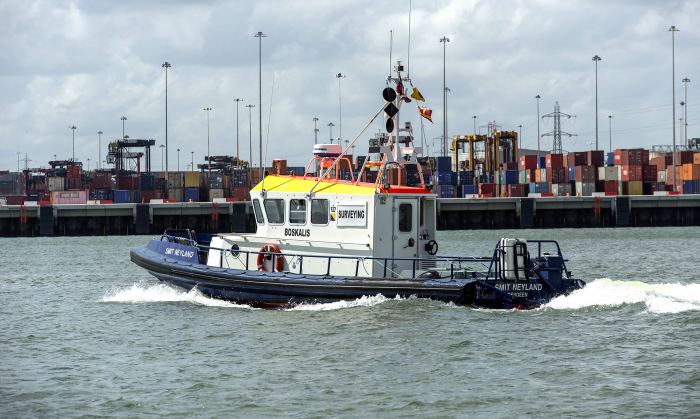DONG: the difference between a follower and a leader
DONG Energy is widely recognized as the pioneer of wind energy. Back in the time when renewables were still suspect, the Danish energy giant went against the grain and invested in the sector anyway. DONG Energy has developed more wind farms than any other company on the planet and it has been active in the wind energy sector for more than 30 years. Samuel Leupold, DONG Energy’s Executive Vice-President Wind Power, explains the difference between being a leader rather than a follower.
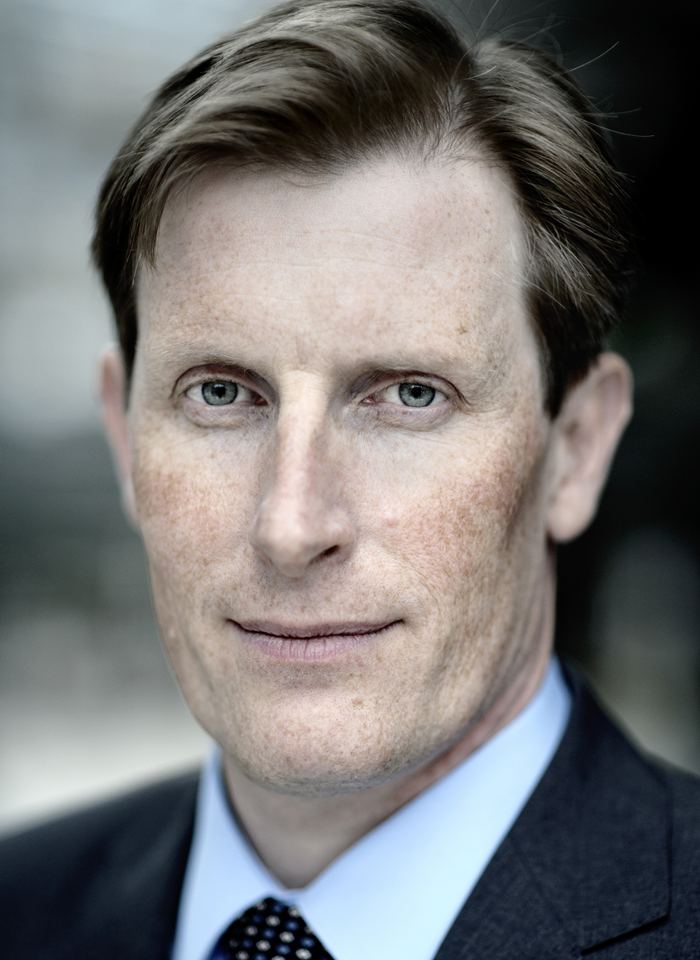
Samuel Leupold — DONG Energy’s Executive Vice-President Wind Power
How do you see the energy market now and in the future? Given the energy transition, are renewables where they should be on the world stage?
“The renewables sector has developed like nobody could have imagined a few years ago. Actually, one of the difficulties facing us today is the momentum of the industry, which has been underestimated for sure. For example, the regulatory framework is not really geared up for the sector, which has evolved tremendously over the last few years. There are however, negatives and events that have perhaps slowed this momentum. In Germany, all the uncertainty around the regulations in 2013/2014 somewhat delayed the development of offshore wind, as well as the situation with the grids: I believe that the business model making the Transmission System Operator responsible for offshore grid construction, and the decision to use High Voltage Direct Current technology, are slowing down development. There is also a lot of political noise surrounding the industry and this has a big impact on investment decisions. On the flip side, in the UK, the British government’s Electricity Market Reform is positive.” “In other words, I see both light and shade.”
How about developments at DONG Energy itself?
“In DONG Energy’s specific domain — offshore wind — the sector is where we expected. We have done the things we said we would do. The large turbines are now being installed: not just 6MW but also 8MW. There are larger projects exceeding 600MW and there are many new features — the industry has effectively progressed well into second generation of development. By scaling up in this way, the sector is reducing risks and installation time, and cutting the cost of energy production considerably.”
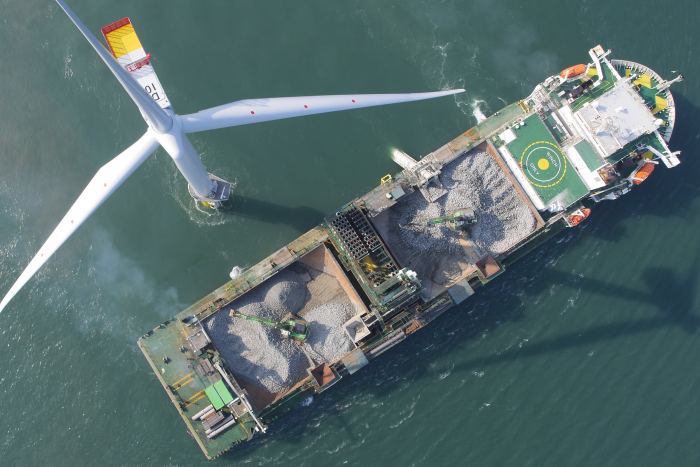
Armour rock is installed through the side dump unit of fallpipe vessel Seahorse
What is DONG Energy’s share of the world wind market?
“DONG Energy has 25% of the whole worldwide wind market. Currently, DONG Energy has 2,500MW operational and 1,300MW under construction. But our strategic target as stated in our 2020 Program is to complete building 6,500MW. We supply more than 2.5 million households with green energy. We aim to keep our leadership position in the offshore wind industry but are happy to stay where we are in terms of market share. Rather than dramatically expanding our market share, we want to grow with the market. I think the industry needs a range of strong players to drive it forward.”
Could you tell readers more about DONG Energy’s ambitious 2020 Program?
“Although, as I said, we plan to build and operate 6,500MW by 2020, DONG Energy’s model means that we won’t own that capacity of 6,500MW. We sell shares to financial investors and typically own 50% of the assets going forward. 2020 is on track. We have got the projects and permits needed, with no delays and well within the necessary timeframe. Projects have been on time and on budget so far.”
I think the industry needs a range of strong players to drive it forward
And after 2020? — (DONG has just made another huge acquisition.)
“This new German project is already an indication of our thinking post-2020. We are putting our money behind offshore wind after that date, and that distinguishes us from many other players.”
“Borkum Riffgrund West 2 shows our intent post-2020. We have to have these large-scale projects, which can provide the economies of scale needed to reduce the cost of electricity to the necessary level.
The industry needs to ask the right questions: What makes a winning project? What is the best way to maximize kilowatt-hours while keeping costs to a minimum? Size does matter: 500-600MW is required. I am very optimistic about the impact this size of operation will have on the cost-effectiveness of wind farms and therefore on the energy landscape of the future.”
What is your vision for the next five years? Where do you see the major challenges?
“I have no doubt that the biggest change in the next five years will be that any subsidies will be awarded on a competitive basis. There is going to be significant cost competition for different projects. This is a game changer.”
“The industry will be looking at whether it can commit to projects at a very early stage: will the project be a winner? This will also put increased pressure on the supply chain because it is going to be a tough race for the most cost-efficient projects. Suppliers and contractors will be asked how they can support developers in this race.
Additionally, the industry will be much broader geographically. It is not just going to be centered on Northwest Europe: offshore wind is getting a foothold in North America and parts of Asia; Japan, China, Taiwan. That’s a very healthy development. We will see new models and new players. The industry needs to find better ways to manage the construction risk. If it doesn’t, it won’t get the financing.”
I am very optimistic about the impact this size of operation will have on the cost-effectiveness of wind farms and therefore on the energy landscape of the future
“On the practical side, even though cable technology is fit-for-purpose, cable-laying seems to be a difficulty. There are still only a limited number of companies that are performing reliably.
Looking beyond 2020, projects will want 10MW turbines. But will suppliers be ready for the 8MW and 10MW turbines? The industry will go for jackets rather than monopiles, but we need the installation capacity for the foundations. Will deck space end up being the limiting factor?”
Can you outline the execution process, from the initial design through to the exploitation of a wind farm?
“DONG Energy is fully integrated throughout the value chain. We take on development, engineering, procurement and construction. Plus we own and operate the wind farm.
To avoid risk, the integrated model is a distinct advantage. Cost reduction is a challenge. We have to prove to policymakers that the risks are worthwhile and deserve their investment. Costs have to come down and the industry has to reduce subsidy levels.
Being an integrated player is a big advantage: we have more levers to pull and can be creative. If you are a pure player, how do you know how to operate in a really cost-effective way? DONG Energy knows: we take lessons learnt and reintroduce them into our development pipeline. Pure players often want to get the permit as soon as possible to cash in, but maybe they don’t take the right decisions in the first instance. These shortcuts can lead to unnecessary costs later on. A holistic approach is vital.”
And how do you see the role of the contractor?
“DONG Energy is always open to working with others; we know we cannot be a specialist in everything. With Boskalis and other suppliers, we want partnerships that allow us to talk about the costs of electricity. We ask contractors; ‘Can you challenge us? Can you see where we can reduce costs? Contractors, you are the specialists — can you show us how to reach our targets?’ In the area of installation, for example, we are sort of waiting for the offshore installation specialists to show us what new concepts are out there so we can make energy cheaper. Sometimes we are offered a proven — yes, good — business model, but please suggest something new! There needs to be new thinking in the future. If not, we all have a problem: the industry will disappear. Suppliers and contractors have a contribution to make to the ‘joint cost journey’. Come up with crazy concepts. Let’s work together.”
If you had a message for contractors what would it be?
“We have this fantastic technology with such a promising future. We can meet the challenges, and cost is the most pressing one. We all need to work to the same goal to make it sustainable. That will benefit us all.”
And dare we ask, do you have one wind farm that is very much the epitome of the ‘perfect’ wind farm?
“I can honestly say that each and every one was, at the time, ‘best in class’. West of Duddon Sands, where we worked with Boskalis, is a ‘jewel’ and, in many respects, it surpassed our expectations but it is an example of the previous generation and that way of building. We did extremely well installing the turbines but this is clearly the conventional approach. It is the last farm of its kind. DONG Energy is very happy with West of Duddon: it is a good project and it was well delivered but it is yesterday’s technology.
Wind farms are now going further offshore into more challenging waters and with larger turbines. Wind farms are getting bigger. Before the end of this decade, our portfolio will include Hornsea, which will be quite a milestone for the industry as it the first offshore wind farm above the 1,000MW mark. Its sheer size is a huge step ahead.”
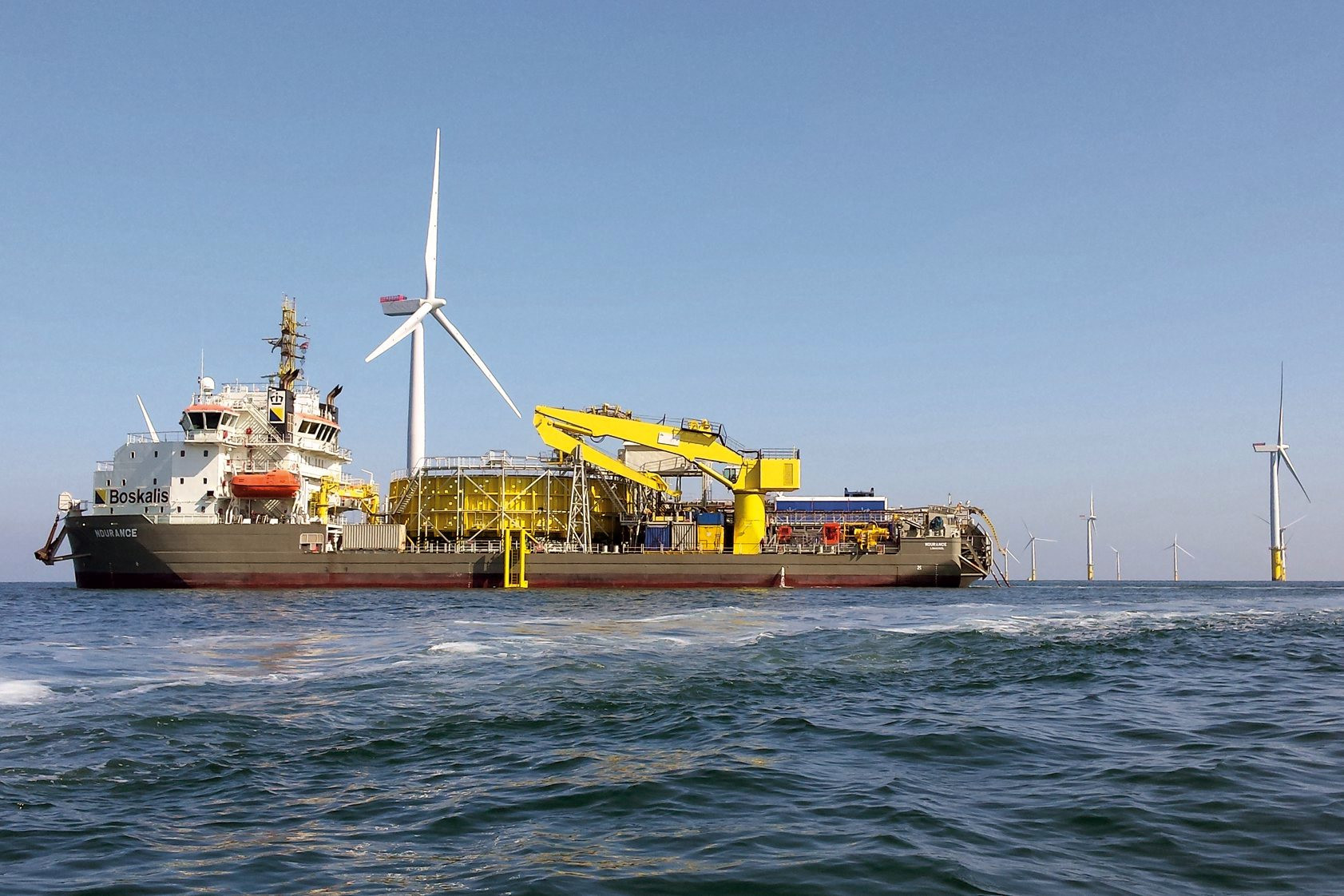
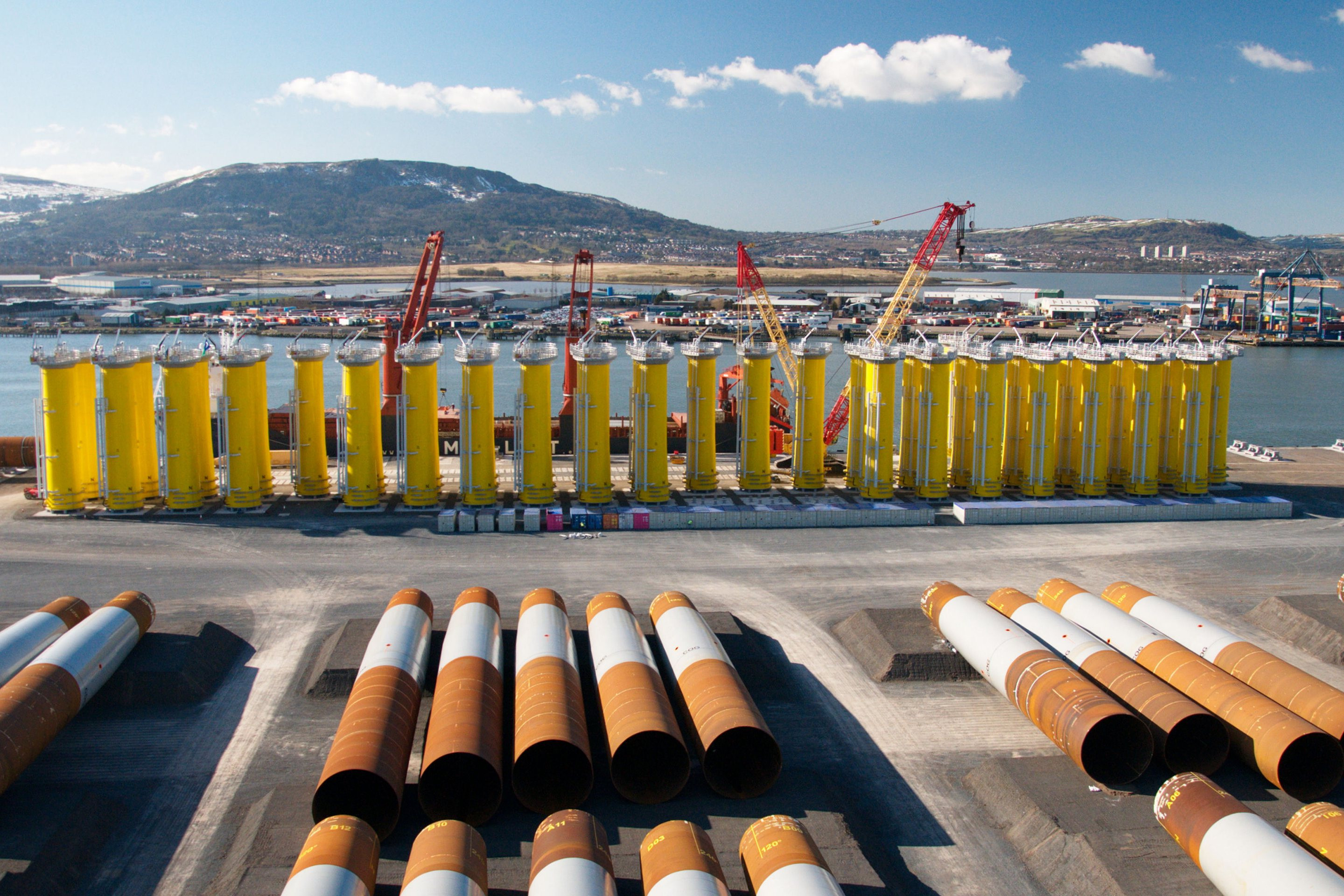
Belfast. The first fourty monopiles and transition pieces ready for transportation to their final destination
Looking to the future, what are your thoughts?
“I am cautiously optimistic about offshore wind but it is a highly political industry and it is always difficult to say what will be at the top of the political agenda. There is a fundamental challenge relating to how we can develop sustainable, affordable power and I personally believe that offshore wind should be in the mix.”
The name of the Boskalis Magazine is Creating New Horizons — what defines a ‘new horizon’ in your book?
“When we decided to have wind in our portfolio, everyone was almost ashamed about talking about renewables. But DONG Energy wanted to broaden our activities, even though it didn’t necessarily seem logical to have it in our portfolio.”
“If there is something I have learnt, it is: be bold! Don’t judge things on what doesn’t make sense today. Things can be very different in tomorrow’s world!”
